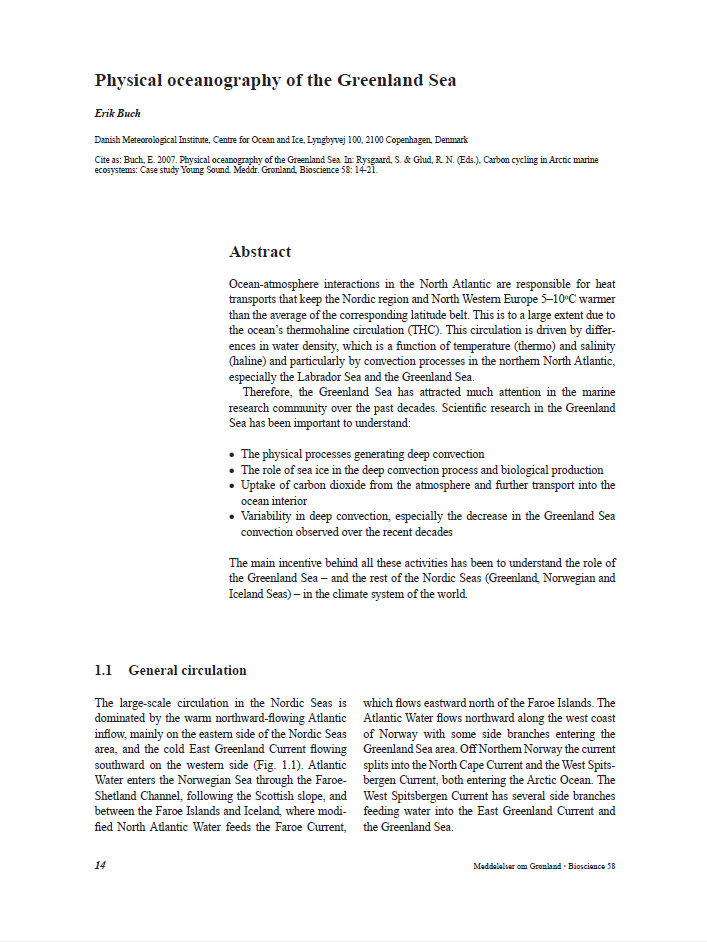Physical oceanography of the Greenland Sea
DOI:
https://doi.org/10.7146/mogbiosci.v58.142635Abstract
Ocean-atmosphere interactions in the North Atlantic are responsible for heat transports that keep the Nordic region and North Western Europe 5–10°C warmer than the average of the corresponding latitude belt. This is to a large extent due to the ocean’s thermohaline circulation (THC). This circulation is driven by differences in water density, which is a function of temperature (thermo) and salinity (haline) and particularly by convection processes in the northern North Atlantic, especially the Labrador Sea and the Greenland Sea.
Therefore, the Greenland Sea has attracted much attention in the marine research community over the past decades. Scientific research in the Greenland Sea has been important to understand:
- The physical processes generating deep convection
- The role of sea ice in the deep convection process and biological production
- Uptake of carbon dioxide from the atmosphere and further transport into the ocean interior
- Variability in deep convection, especially the decrease in the Greenland Sea convection observed over the recent decades
The main incentive behind all these activities has been to understand the role of the Greenland Sea – and the rest of the Nordic Seas (Greenland, Norwegian and Iceland Seas) – in the climate system of the world.

Downloads
Published
Issue
Section
License
Coypyright by the authors and the Commision for Scientific Research in Greenland / Danish Polar Center/Museum Tusculanum Press as indicated in the individual volumes. No parts of the publications may be reproduced in any form without the written permission by the copyright owners.

